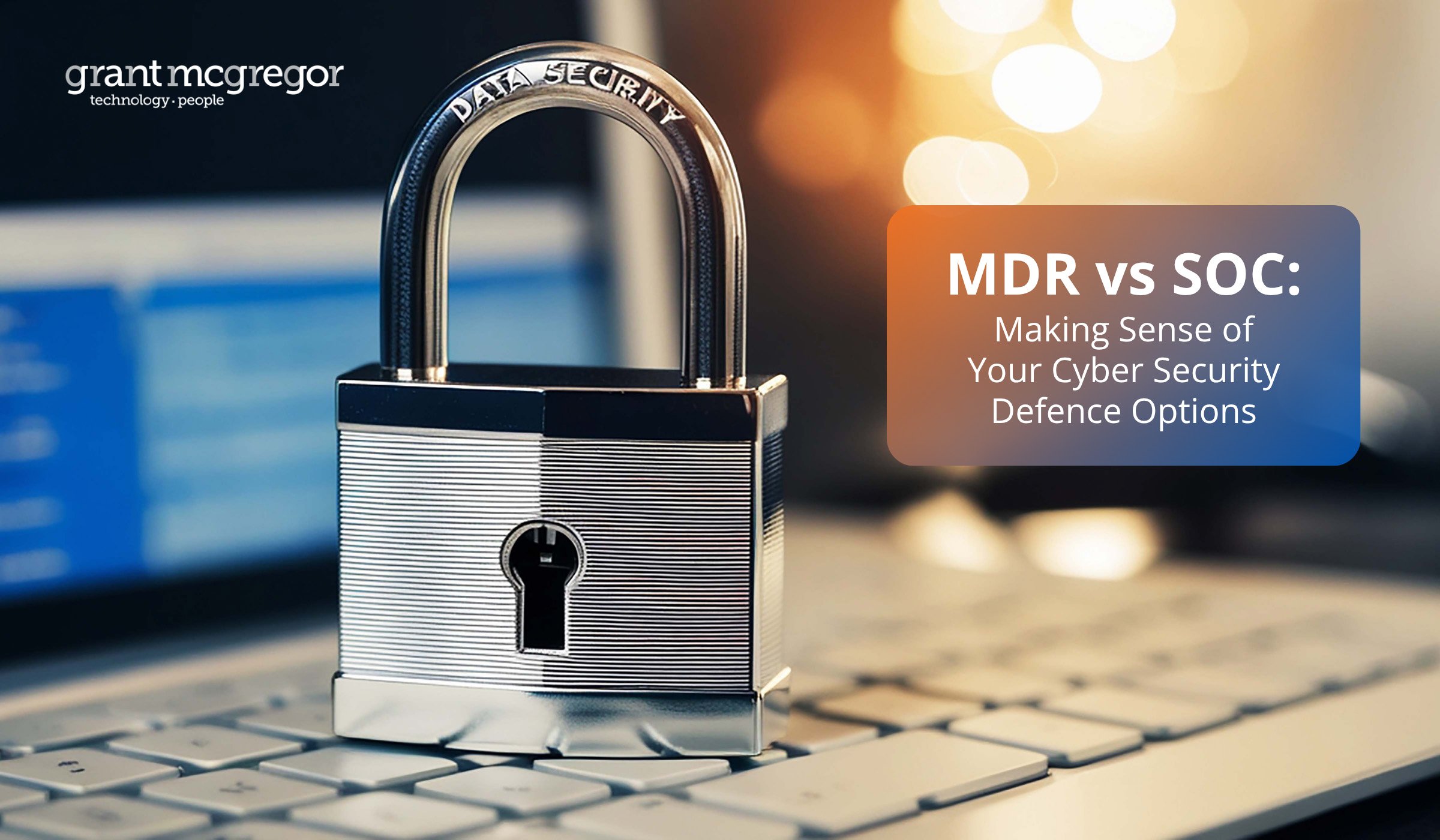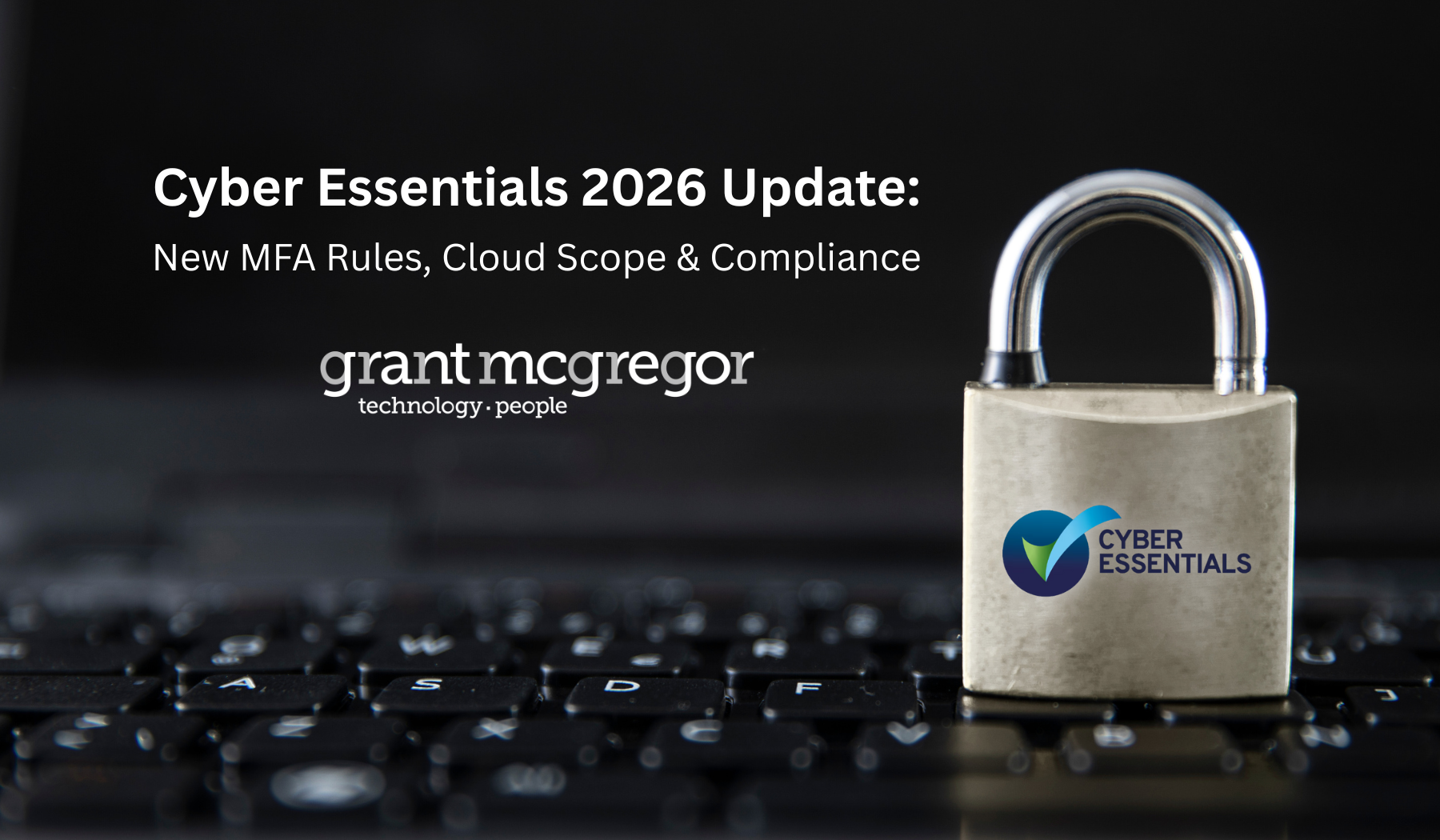MDR vs SOC: Making Sense of Your Cyber Security Defence Options

Some of the UK’s most recognisable brands have faced serious cyber incidents this year.
A new wave of cyber attacks driven by phishing, stolen credentials and ransomware is affecting the UK. Cyber criminals target organisations whose defences are weakest, regardless of their industry or size.
Marks & Spencer suffered a data breach when attackers impersonated IT help desk staff and tricked employees into disclosing their login details and multi-factor authentication codes. This allowed criminals direct access to internal systems and sensitive data.
The Co-operative Group narrowly avoided a severe ransomware crisis when its IT team disconnected systems just in time to prevent full encryption. West Lothian Council confirmed a ransomware attack that stole data from staff and pupils, resulting in complex recovery efforts, police investigations and reputational damage.
These breaches are part of a growing pattern. Harrods, Jaguar Land Rover, Glasgow City Council, Heathrow Airport and Adidas have all encountered significant cyber issues in the past year.
It highlights a growing problem: attackers are faster and better funded. They increasingly use social engineering and ransomware-as-a-service. They exploit basic weaknesses such as weak passwords, slow patching and poor network segmentation and they use automation to launch attacks quickly. Traditional firewalls and antivirus software alone are no longer enough.
The goal for organisations of every size is to stop as many attacks as possible. Modern security means preventing what you can and acting fast when something gets past your first line of defence.
This is why many leadership teams are rethinking their security operations. Two models are prevalent: Managed Detection & Response (MDR) and the Security Operations Centre (SOC). Both offer 24/7 protection, but they do so in very different ways. Understanding these differences is crucial for choosing the right defence strategy for your business.
 What is Managed Detection & Response (MDR)?
What is Managed Detection & Response (MDR)?
Think of Managed Detection and Response (MDR) as an expert emergency service. An MDR provider monitors your systems 24/7, looking for unusual activity, validating alerts and acting quickly when needed.
They integrate with your environment and use advanced tools such as Endpoint Detection and Response (EDR/XDR), behavioural analytics and machine learning to detect issues early.
When something suspicious is confirmed, human analysts investigate and take action, such as isolating devices, blocking malicious traffic or guiding your IT team through the recovery process.
This approach can be implemented quickly and is ideal if you don’t have a large in-house security team but still require reliable protection.
What is a Security Operations Centre (SOC)?
 A Security Operations Centre (SOC) is like setting up your own fire brigade and control room. This function can be run in-house, outsourced, or as a combination of both and it manages your organisation’s day-to-day security operations.
A Security Operations Centre (SOC) is like setting up your own fire brigade and control room. This function can be run in-house, outsourced, or as a combination of both and it manages your organisation’s day-to-day security operations.
A SOC team collects and analyses logs, monitors your network, cloud and endpoints 24/7, triages alerts and coordinates incident response. They also handle vulnerability scanning, compliance reporting and long-term security planning.
Although you have full control and can customise it extensively, you will need the right people, processes and tools to ensure it functions effectively.
How MDR and SOC fit together
Although MDR and SOC are often compared, the two are closely connected.
- MDR is a service you can buy to get round-the-clock threat monitoring, detection and rapid response without building your own security team.
- A SOC is a security function you either build and run yourself or outsource, responsible for watching systems, analysing alerts and managing incidents every day.
Most MDR services run on the provider’s own SOC. The difference is that MDR gives you 24/7 expertise and tooling without the cost and effort of setting up and running a SOC yourself.
Understanding the key differences: Quick comparison
A side-by-side comparison of Managed Detection & Response (MDR) and a Security Operations Centre (SOC).
|
Area |
MDR |
SOC |
|
Delivery model |
Fully managed, outsourced service run by the vendor |
In-house, outsourced, or hybrid function |
|
Primary goal |
Rapid detection, investigation and response |
Broad security operations, compliance and long-term service |
|
Setup time |
Fast, provider-driven |
Longer; needs planning, staff & the right tools |
|
Internal resource need |
Minimal day-to-day involvement |
High: analysts, engineers, managers |
|
Customisation |
Pre-defined playbooks with some tailoring |
Fully tailored to your own systems and processes |
|
Cost model |
Predictable, subscription-based pricing |
Higher long-term cost but greater control and ownership |
|
Best for |
SMEs and smaller IT teams that need 24/7 protection without building a SOC |
Larger or highly regulated organisations that need greater control and customisation |
Decision Factors: MDR vs. SOC
MDR
A good Managed Detection & Response (MDR) provider will:
- Implement or integrate tools such as EDR/XDR with your existing user accounts and cloud services to give you full visibility across your people, devices and data.
- Agree clear playbooks (ready-made response plans) for common threats such as ransomware, account takeover or supply-chain compromise, so action is immediate and consistent, even at 2 a.m.
- Provide 24/7 experts who can isolate compromised devices or block malicious accounts the moment an incident is detected.
SOC
 If you’re considering building an in-house or co-managed Security Operations Centre (SOC), you’ll need:
If you’re considering building an in-house or co-managed Security Operations Centre (SOC), you’ll need:
- Skilled analysts to create and fine-tune detection rules as threats evolve.
- Automation (SOAR: Security Orchestration, Automation and Response) to cut down manual alert triage and speed up reaction time.
- Reporting that shows the business impact of security work, including:
• Dwell time: how long attackers stay undetected inside your systems.
• Mean Time to Detect (MTTD): the average time it takes to spot a threat.
• Mean Time to Respond (MTTR): how quickly your team contains and resolves an incident.
• Compliance status against frameworks such as Cyber Essentials Plus, GDPR or ISO 27001.
Cost and Value
MDR offers predictable subscription pricing and a fast path to 24/7 expert cover, ideal if you need enterprise-grade detection and response quickly.
A SOC requires bigger upfront investment in people, tools and processes, but gives long-term control and deep customisation.
Many organisations start with MDR, then grow into a co-managed SOC as they scale and mature.
In Summary
 Breaches at Marks & Spencer, Harrods, Jaguar Land Rover, Heathrow Airport and others show that no brand is too big to target. If your organisation isn’t sure it could spot and stop an attack fast, it’s time to think seriously about your operating model.
Breaches at Marks & Spencer, Harrods, Jaguar Land Rover, Heathrow Airport and others show that no brand is too big to target. If your organisation isn’t sure it could spot and stop an attack fast, it’s time to think seriously about your operating model.
- With MDR, security specialists watch your systems 24/7 and act the moment a threat appears.
- A SOC builds a long-term, deeply integrated security function.
- A hybrid model gives you the best of both: speed when an incident hits and control when you need compliance and strategy.
 Need help deciding?
Need help deciding?
If you’re weighing up MDR vs SOC and want a clear, practical plan, including how to balance cost, speed and control, our team can help.
We work with leading partners to deliver fast-start Managed Detection & Response (MDR) and 24/7 threat monitoring, aligned with Cyber Essentials Plus, GDPR and UK regulatory needs.
Connect with Us Today!
Call us: 0808 164 4142
Message us: https://www.grantmcgregor.co.uk/contact-us






